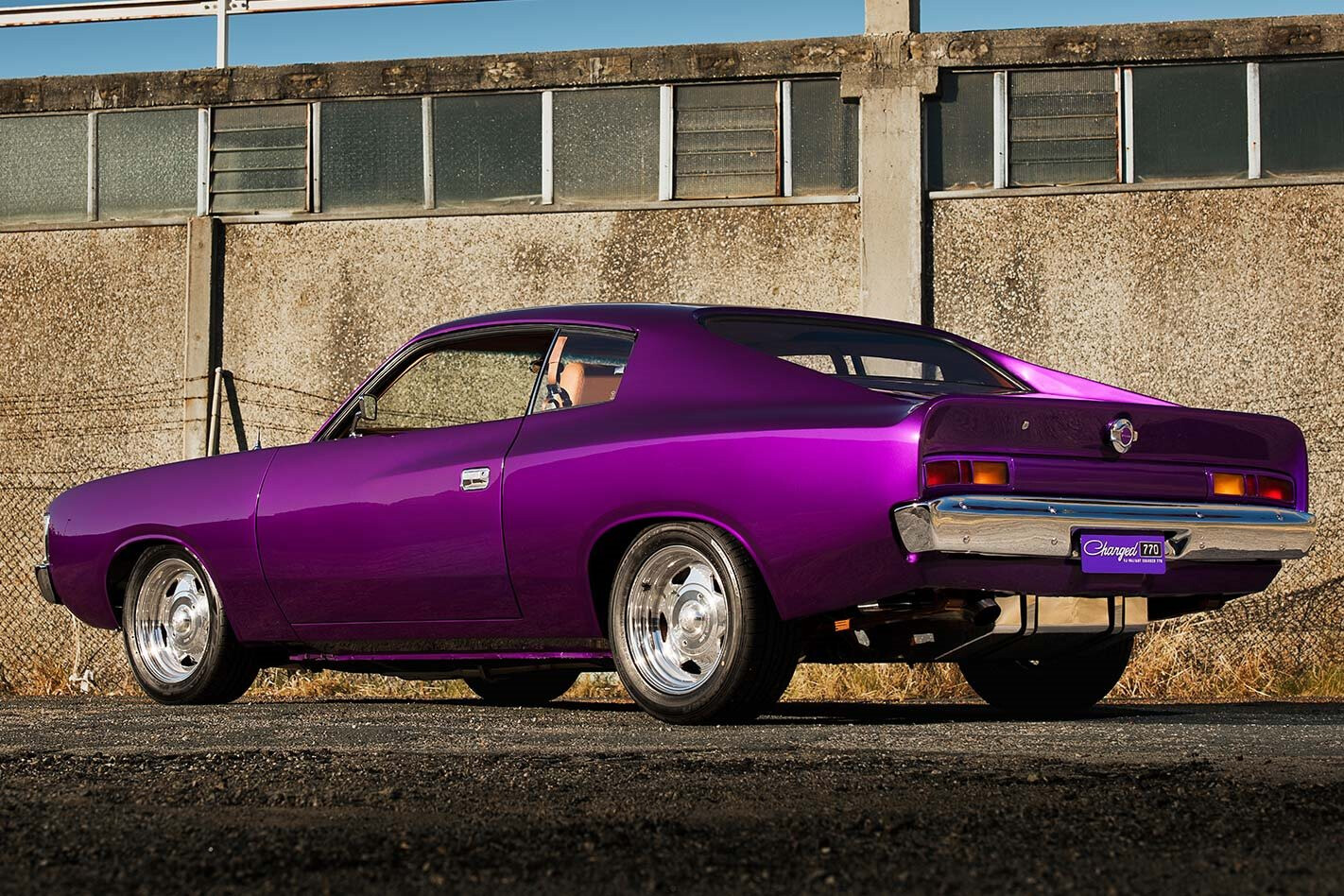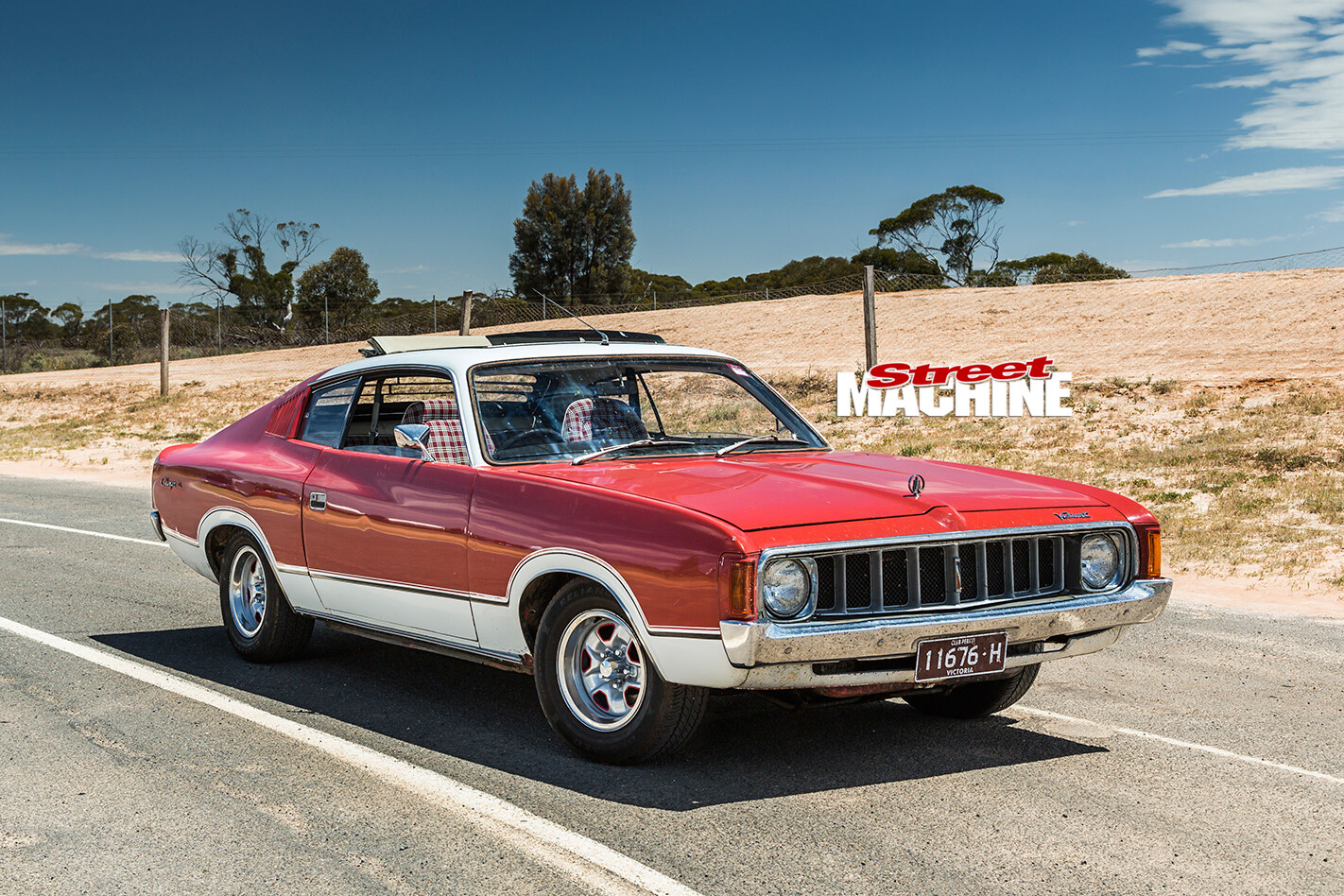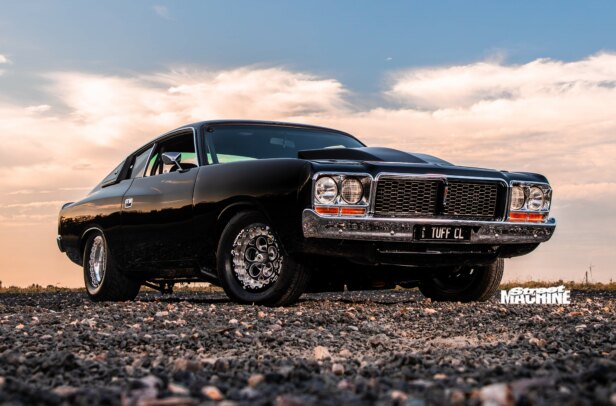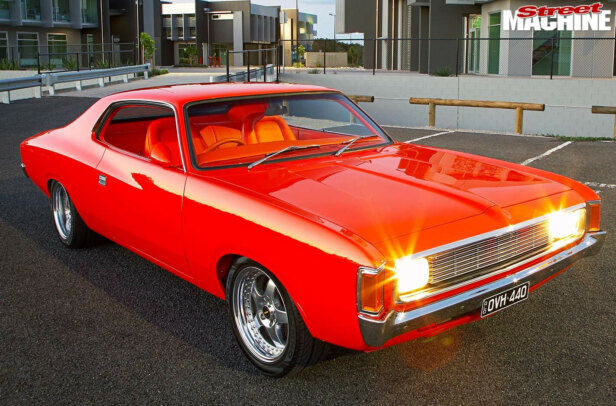Richard Hatton’s Chrysler VH-fronted VJ Charger is more than just a neat, tough ride; it’s a time capsule testifying to a lifelong passion for hot cars
This article on Richard’s VJ Charger was originally published in the April 2018 issue of Street Machine
SPARE time. I remember those days. As a young bloke kicking around with cars, time and energy were in plentiful supply, and it was amazing what you and a bunch of mates could achieve when working on each other’s projects. Then life takes over and family, work and house commitments suck your time stores dry – seemingly 25 hours a day, eight days a week – and the prospect of any free moments to swing spanners or shoot the breeze becomes a mirage.
Forty-four-year-old Richard Hatton remembers those early days well, spending many a weekend working on chrome-bumper rides with his mates. His automotive interests were a product of his parents’ influence. “My dad Kevin always loved cars but never had the opportunity to fully immerse himself in them like I have,” Richard says. “But he bought my mum a Charger when I was 12 and I guess that shape never left me; I bought this one when I was 18.”
Twenty-six years of ownership is a long haul in anyone’s language, but there were a few blips along the way. “I sold the car during a moment of temporary insanity,” Richard admits. “But my wife Sandy was cool enough to let me buy it back – we were on our honeymoon at the time!
Richard’s VH-fronted VJ received a couple of visual alterations to the body, including the filling in and smoothing of all superfluous chrome and the faux vents that normally adorn the sides of VH/VJs, along with reworked bumper bars and modified tail-light housings
“I drove the car for a few years, but then in 1999 the gearstick came out in my hand, which triggered the rebuild. Oh, and the part about the car being off the road in pieces for 19 years.”
What? Yes, that’s a long build, but as the old saying goes, you’re better off looking at it than looking for it, and Richard figured the Charger would be done when it was done. “Realistically it was only worked on for three or four years in that time, as I got sidetracked with other hot car projects,” he explains. “But the build process itself really only had the usual small issues – nothing major, which was good.”
Passion Pearl from the HOK colour range suits Richard’s VJ perfectly and the depth of colour is almost liquid-like. A cracker of a stance is a Charger must-have, and the Center Line Fluted Stars offer up a nice contrast to the paint and match the refurbished chrome
Growing up exposed to the likes of Rex Webster’s FJ, Howard Bell’s SLR 8000, Rob Beauchamp’s VL Calais and Howard Astill’s three incarnations of the Rock XA Falcon, Richard gained an appreciation of the facets that define a memorable hot car: looks, power and identity. As well as these attributes, streetability was never far from Richard’s mind with the build of his VJ.
The Charger was in pretty fair condition when he bought it as a teen; its silver hue and Aunger Hustler mags gave it some street cred, but Richard’s endgame factored in more grunt from the famous Aussie 265-cube six-cylinder donk.
A custom drop tank is a nice addition, a styling hallmark that harks back to Richard’s formative years as a young bloke immersing himself in the car scene
The standard cast block was given a thorough hoovering before a balanced factory crank and rods assembly was refitted along with ACL pistons.
An E49-spec hydraulic cam is a proven choice for making a Hemi get up and boogie, and was installed along with Crane valve springs and Yella Terra roller rockers atop a ported cylinder head.
A Cain alloy intake manifold is a nice choice, especially when fitted with a 625cfm Carter four-barrel carb, while Medusa-like Pacemaker extractors whisk the used gasses away via a 2.5-inch stainless system and 3.5-inch dump pipe.
The factory Chrysler electronic distributor was more than up to the task; however, an AC Delco module now boosts its operation to a full 12 volts compared to the factory Mopar points-like nine-volt operation.
A close-ratio single-rail four-speed, backing a lightened flywheel and heavy-duty clutch, was retained to harness this healthy six, and out back the original BorgWarner diff was upgraded with a four-pinion LSD centre and 3.70 gears.
205rwhp and mid-14-second quarters were more than respectable back in the mid-to-late 90s, but it was around this time that Richard felt the rest of the car would benefit from a tidy-up, so he got busy and pulled it down for a birthday.
A 265-cube Chrysler Hemi-six needs no introduction, and Richard’s Charger retains the same engine specifications he ran back in the 90s. A 625 Carter 4bbl carb on a Cain intake offers up R/T-esque triple-Weber performance but with ease of tuning, while the Pacemaker pipes and 2.5in stainless system emit that unmistakable Hemi exhaust note
The body was sent to Sam and Cassie Rhodes at Vulcan Panel & Paint, in the Perth suburb of Canning Vale, to get the metalwork up to scratch. This pair are well-versed in this bodystyle, given Cassie’s own immaculate E55, a former SM cover car.
Richard is old enough to appreciate the importance of personal touches when building a modified car, so the original VJ nose was replaced with his preferred earlier VH front clip, and the vents immediately aft of the side windows were filled for a cleaner look. The tail-light housings also scored a nifty mod by removing a number of the vertical bars to individualise the rear treatment, which also ties in nicely with the nipped and tucked rear bumper bar and alloy drop tank.
Neat engine bay detailing mixes paint with polished alloy, while colour-coding of the K-frame to the engine is a neat touch
With all remaining badgework and chrome shaved, Sam laid down the liquid-like HOK Passion Pearl, which effectively bridges the gap between modern hues and traditional 70s factory muscle-car colours.
With the body back up to spec, Richard busied himself with the undercarriage, rebuilding the factory torsion-bar front suspension and adding reset leaf springs to the rear. The stock disc/drum brake combo has been upgraded with slotted and cross-drilled DBA rotors at the pointy end.
Sixteen-inch Center Line Fluted Stars in seven- and eight-inch widths were purchased from the US many years ago and pop nicely against the purple exterior, and are shod in Falken 225/50 and 255/50 rubber.
If the drivetrain and looks department already have you giddy with excitement, then brace yourself as we swing open one of those generous coupe doors. Richard stepped away from the R/T norm with his interior, tackling the lighting, stereo installation and pedals in-house, along with relocating the heater controls to the ashtray and modifying the door mechanisms to accommodate Plymouth ’Cuda handles. Then it was over to Jason and Steve at World Custom Trimming, who went to town with the tan leather, reupholstering the Autotechnica front buckets and bolstered Charger rear seat, and adding a custom centre console, headlining, door trims and armrests – the latter to suit the aforementioned ’Cuda handles.
The interior is a standout. Tan leather covers the Autotechnica front buckets and all surrounding trim, with the custom console and under-dash panelling booting the finish of this 1970s icon into 2018
The dash fascia is also a one-off, dipped in a very cool hydrographic print, while the modern touches continue with the stereo head unit mounted in the glovebox via a 3D-printed panel.
With the Charger finally back on the road, Richard has wasted no time getting out and enjoying the car, scooping Best Interior and a Top 10 Elite spot at Motorvation 2018, and Best Interior and Top Car Overall at the 2018 Oz Nats.
“I still have a few areas of the car I’d like to tidy up, but there are no major changes planned,” he says. “I just want to get out and drive it!”
’Cuda door handles and a hydrographic-printed dash fascia are decades apart technologically, but blend seamlessly
And a fair call too after such a long hibernation, especially given the hectic pace of modern life. But has a return to the driver’s seat spawned a return to Richard’s early times of building cars with friends? “Sadly, no; my mates have pretty much all sold their cars these days, and the couple that remain don’t require any work. It’s a shame, but just how things go I suppose. To be honest I don’t have any spare time anyway, so it’s a vicious circle.”
Ah yes, I know this story well.
RICHARD HATTON
1974 CHRYSLER CHARGER
Colour: HOK Passion Pearl
DONK
Make: Chrysler 265ci
Block: Factory cast
Crank: Standard, balanced
Rods: Stock, balanced
Pistons: ACL
Camshaft: E49-spec hydraulic
Heads: Factory cast, ported
Intake: Cain Hemi alloy
Carb: Carter 625cfm
Ignition: Chrysler electronic distributor, AC Delco module
Exhaust: Pacemaker extractors, stainless single 2.5in
SHIFT
Gearbox: Single-rail four-speed
Clutch: Heavy-duty
Diff: BorgWarner, four-pinion LSD, 3.70 gears
BENEATH
Front suspension: Factory torsion bar, Koni adjustable shocks
Rear suspension: Reset leaf springs, Koni adjustable shocks
Brakes: Chrysler discs (f), Chrysler drums (r)
ROLLING STOCK
Rims: Center Line Fluted Star; 16×7 (f) 16×8 (r)
Tyres: Falken; 225/50 (f) 255/50 (r)




Comments